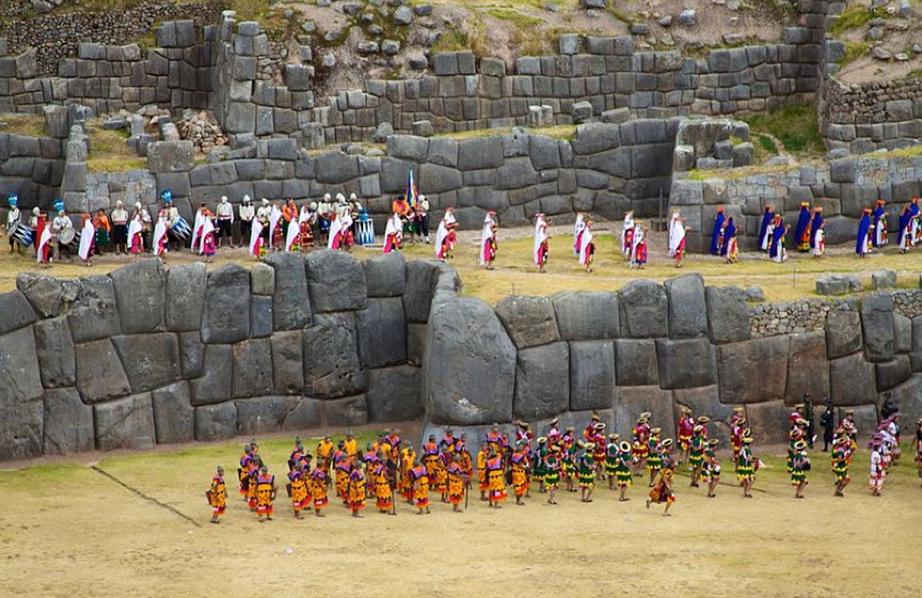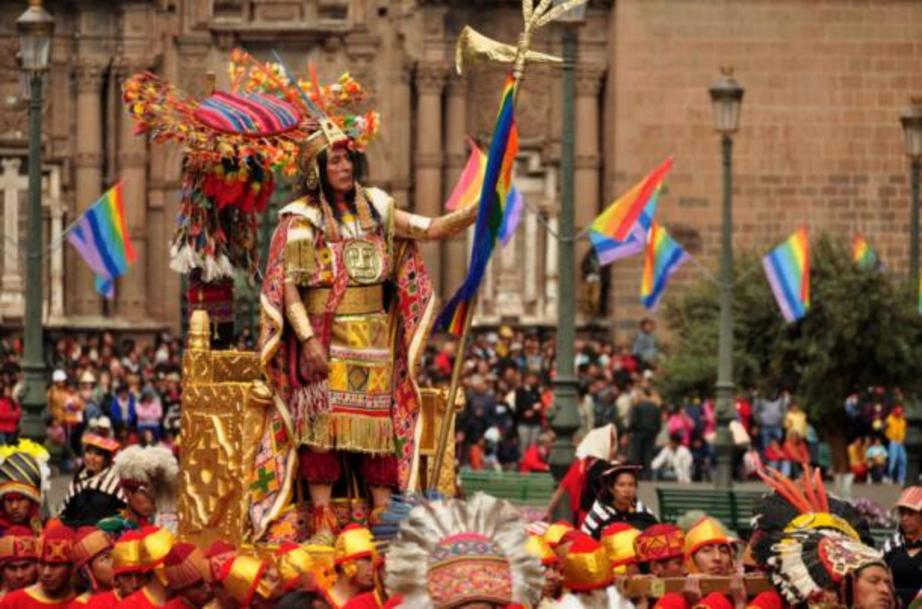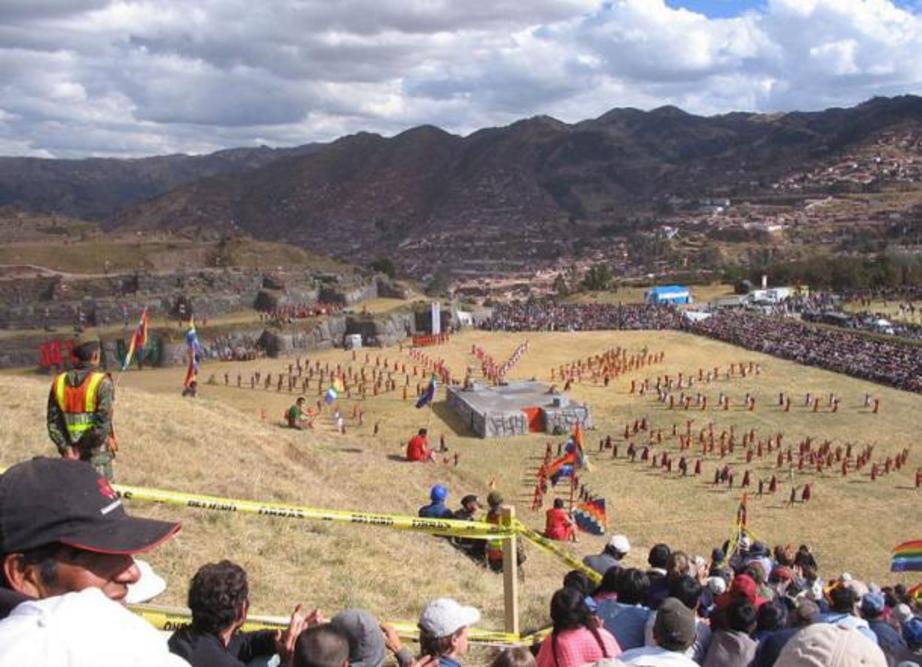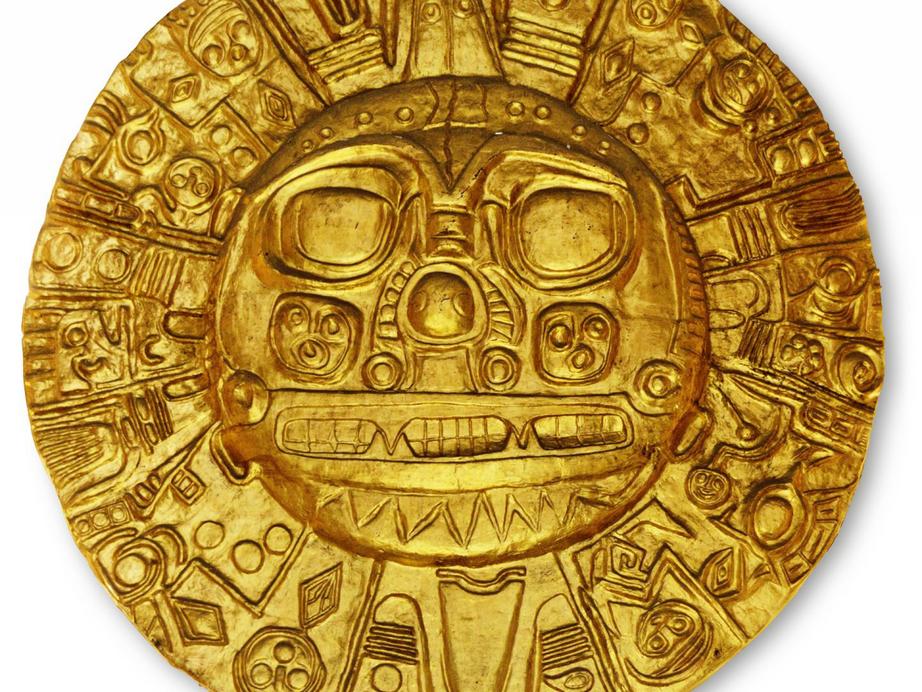Ancient Inca festival celebrating sun god, once practiced in secret, is revived in Peru
Every year on June 24, Cusco in Peru celebrates the Inti Raymi, a tribute festival to the venerated Inca Sun God Inti. As TRT World reports, the festival draws thousands of local and international guests to the ancient Inca capital to commemorate one of the most significant events of the calendar year.
Inti Raymi in the Past and Its Revival

During Inca times, more than twenty-five thousand people would gather in Cusco to celebrate the festival of Inti Raymi. The Sapa Inca (Inca Emperor), nobles and priests of the Inca Empire would gather in Haukaypata (a great square at the center of the city) to witness a parade of cloth wrapped ancestral mummies that were brought from nearby temples and shrines. As many as two-hundred llamas would be sacrificed during the festivities and the Haukaypata would be literally filled with ‘sacred blood’ and plentiful chicha (the Inca beer). The festivities took place from dawn to dusk. There were special dances and coca leaves were read and burnt in great quantities. Inti Raymi was the greatest Inca festival of the year and everyone who attended became drunk with spiritual communion.
 Inti Raymi celebrations in Cusco, Peru. Here an indigenous person of Peru is dressed as the Inca Emperor
Inti Raymi celebrations in Cusco, Peru. Here an indigenous person of Peru is dressed as the Inca Emperor
Spanish Invaders Ban Sacred Celebration
When Spanish conquistadors invaded Peru and surrounding countries, the sacred celebration of Inti Raymi was declared pagan and contrary to the Catholic faith. Their precious mummies were burned and in 1572, the festivities were banned. However, every year on the solstice, indigenous people of the Andes continued to venerate their sun god in secret from 1542 to 1824.
Inti Raymi Today
In 1944, Inti Raymi was revived once again and in recent times, it has seen a strong resurgence. For Peru's indigenous population, the June solstice celebration honors the beginning of the sun's journey back to "Pachamama,” which translates to “Mother Earth” in Quechua, a language spoken by some 3.2 million Peruvians.
Even though many things have changed since the ancient Inti Raymi, the festival still retains all of its ancient majestic glory but without the procession of ancient mummies and only one animal sacrifice at the culmination of the day’s celebrations. The festivities start in the morning on the large open cancha at the front of the Inca Temple of the Sun – Korikancha. The Sapa Inca, portrayed by an indigenous actor, opens the festivities by invoking praise to the Sun God, Inti. From Korikancha, the royal entourage continues the short distance to Cusco’s Plaza de Armas. A ceremonial reading of the sacred coca leaf then takes place to foresee the fate of the Inca Empire for the up-coming year.
 The Inti Raymi (Festival of the Sun) at the Sacsayhuamán inca fortress in Cuzco, Peru, on 2007, June 24th
The Inti Raymi (Festival of the Sun) at the Sacsayhuamán inca fortress in Cuzco, Peru, on 2007, June 24th
The ancient Inca archaeological site of Saqsayhuman is where the final part of the reenactment takes place. Thousands of local spectators crowed the surrounding hills for a glimpse of the ceremony, whilst premium grandstand seats are available in the main arena of Saqsayhuman. Dressed in full costume, the Inca Emperor delivers his final words in Quechua before a reenactment of a ritual sacrifice of a llama. The festival finishes as the air fills with the sound of horns, panpipes and beating drums.
The Pride of the Locals Who Participate
"I feel happy and proud, like every Cuzco resident, to participate," Alexander Carbajal, who is participating in the festival for the second straight year portraying a soldier of the imperial guard of the Inca, tells TRT World. While an excited local who dons a colorful poncho adds, "As people from Cuzco we feel proud.”
It’s perfectly understandable how the locals feel so much pride and joy for the revival of this festival after their tradition was violently and suddenly repressed by Catholic priests during the Spanish Invasion. Today, its popularity has reached new heights, "Cuzco is a large and ancient city, and many towns of the same era are now cloaked in oblivion," told TRT World the deputy minister of tourism, Rogers Valencia, pointing out the disappearance of the Mesopotamian cities of Nineveh and Babylon before he proudly adds, "Cuzco, with its 3,500 years, (still) lives.”
 Inti Raymi at Saksaywaman, Cusco
Inti Raymi at Saksaywaman, Cusco

